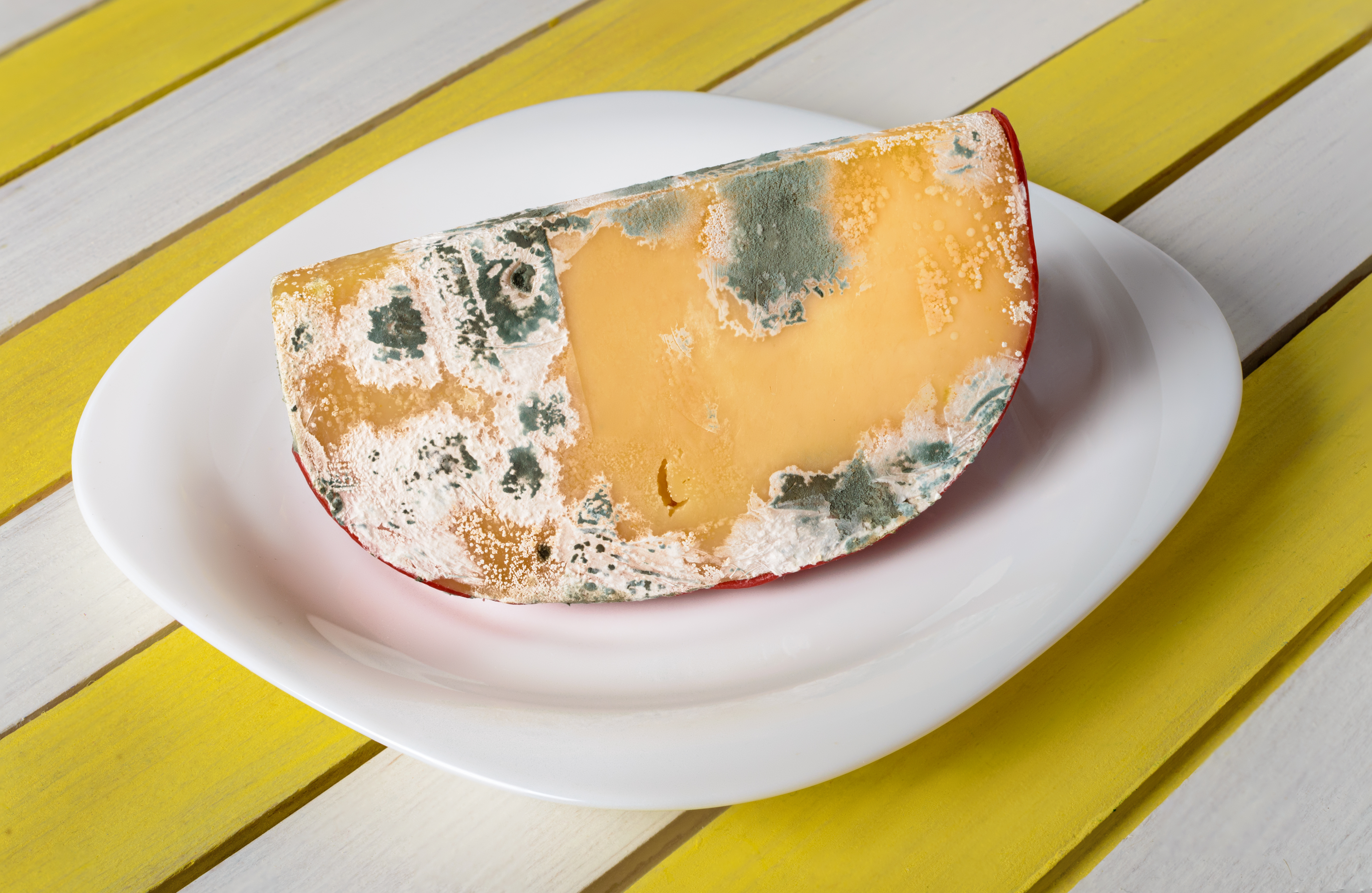Have you ever been in a situation where you're about to eat some cheese, then you notice some mold on it? It's a common occurrence, and it can be tempting to just cut off the moldy part and eat the rest. But is that really safe?
What Causes Cheese to Mold?
:max_bytes(150000):strip_icc()/blue-cheese-175519850-59ff94a889eacc00379661cf.jpg)
Cheese is made by adding bacteria or mold to milk, which causes it to ferment and form curds. So, it's not surprising that cheese can sometimes develop mold on its own.
Mold is a type of fungus that grows in warm, moist environments. It can grow on almost any surface, including cheese. It's usually not harmful, but it can produce toxins that can cause illness if consumed in large amounts.
Is It Safe to Eat Moldy Cheese?

The short answer is no, it's not safe to eat moldy cheese. Even if you cut off the moldy part, there's a chance that the rest of the cheese has been contaminated with mold spores.
Some types of mold can produce mycotoxins, which are harmful to humans. These toxins can cause a range of symptoms, including nausea, vomiting, and diarrhea. In severe cases, they can even cause organ damage.
What Should You Do If You've Eaten Moldy Cheese?

If you've eaten moldy cheese and you start to experience symptoms like nausea, vomiting, or diarrhea, it's important to seek medical attention immediately. Your doctor can help determine if you need treatment and what kind of treatment is necessary.
In most cases, the symptoms of eating moldy cheese will go away on their own within a few days. However, if your symptoms are severe or don't go away, you may need medical intervention to help you feel better.
How Can You Avoid Eating Moldy Cheese?

The best way to avoid eating moldy cheese is to be vigilant when buying and storing cheese. Here are some tips:
- Check the cheese for mold before buying it. If you see any mold, don't buy it.
- Store cheese in the refrigerator at the right temperature. Cheese should be stored at a temperature between 35°F and 45°F.
- Wrap cheese tightly in plastic wrap or aluminum foil to prevent mold growth.
- Don't keep cheese for too long. Cheese can only be stored for a certain amount of time before it starts to go bad.
What Are Some Types of Cheese That Are Prone to Mold?

Some types of cheese are more prone to mold growth than others. Here are some examples:
- Blue cheese
- Brie
- Camembert
- Feta
- Gorgonzola
- Roquefort
If you're a fan of these types of cheese, it's important to be extra vigilant when it comes to checking for mold and storing them properly.
Conclusion
While it can be tempting to just cut off the moldy part of cheese and eat the rest, it's not safe to do so. Mold can produce harmful toxins that can cause illness, so it's best to avoid eating moldy cheese altogether.
By being vigilant when buying and storing cheese, you can reduce your risk of eating moldy cheese and experiencing the unpleasant symptoms that come with it.